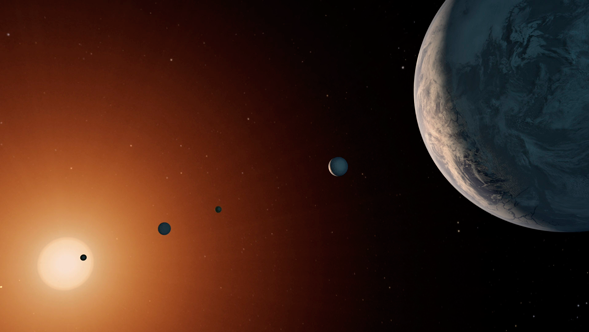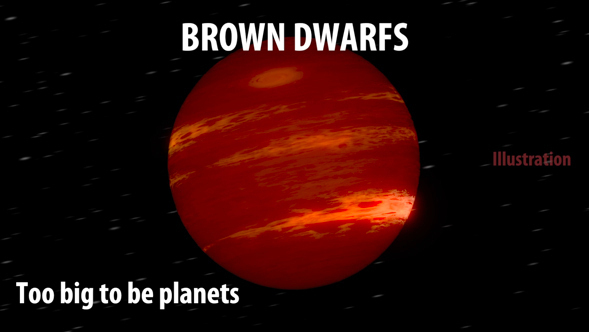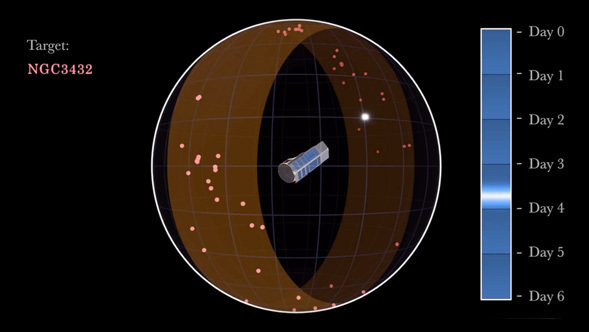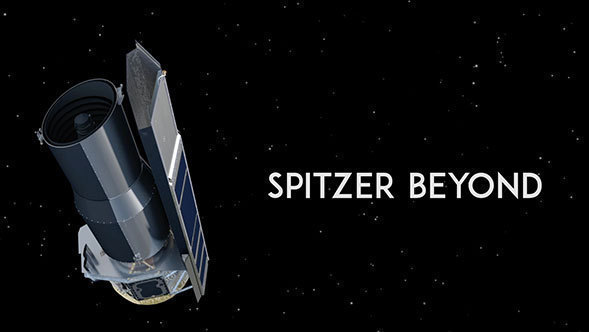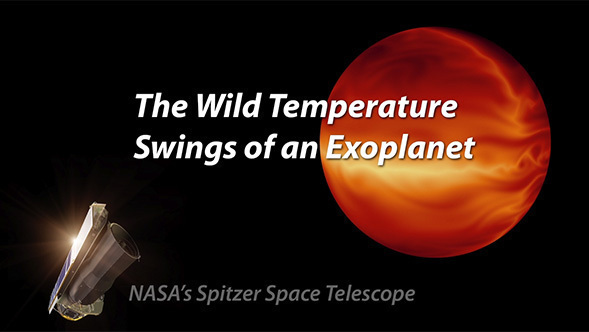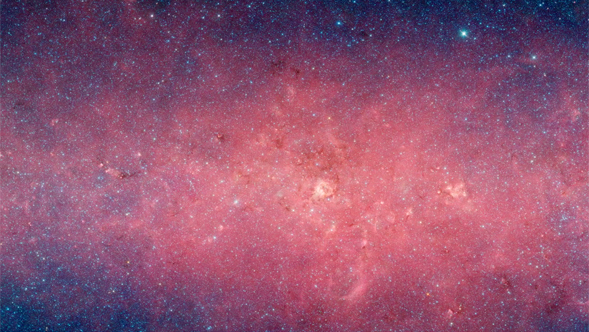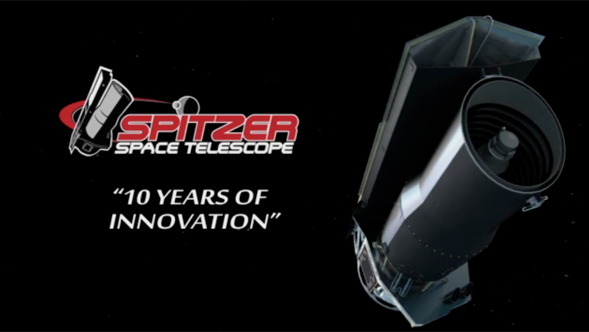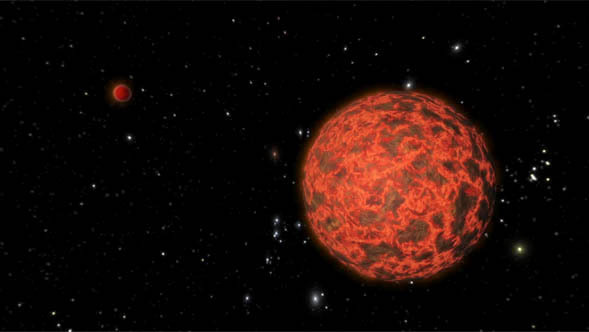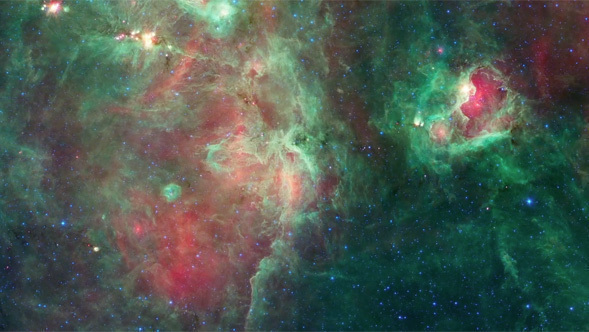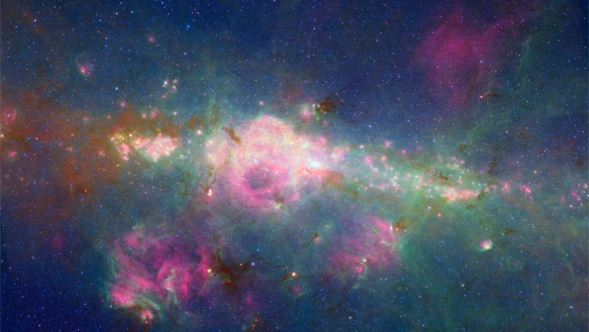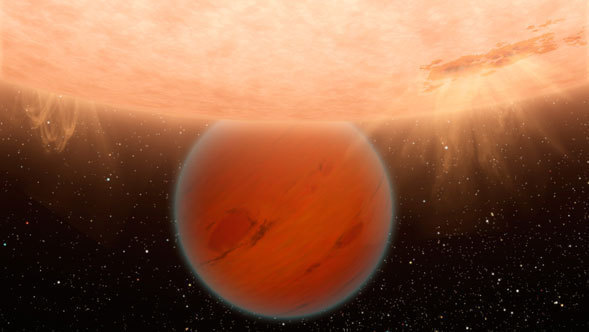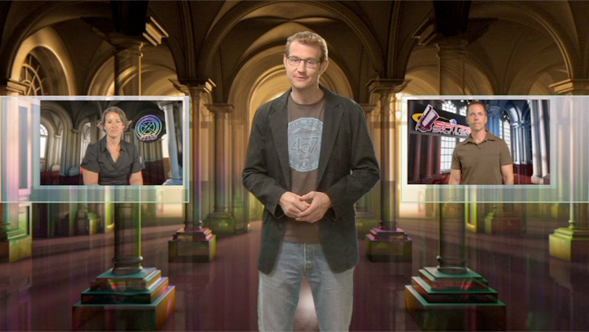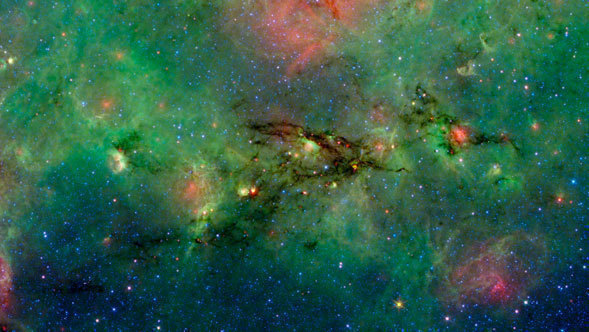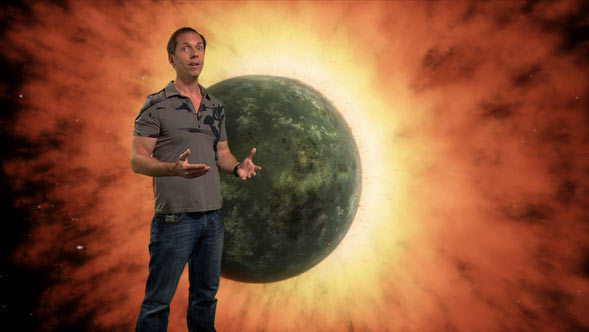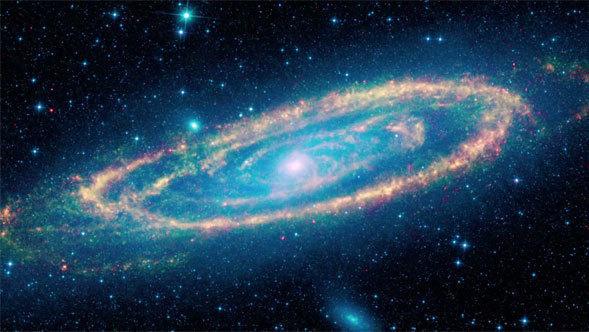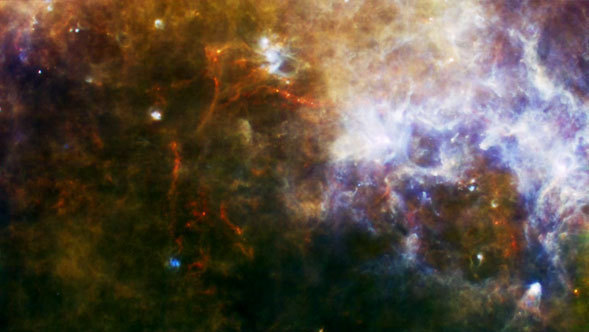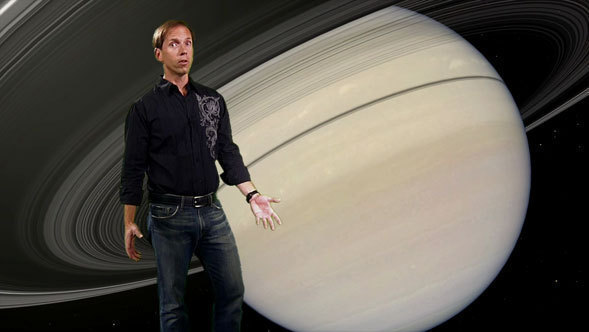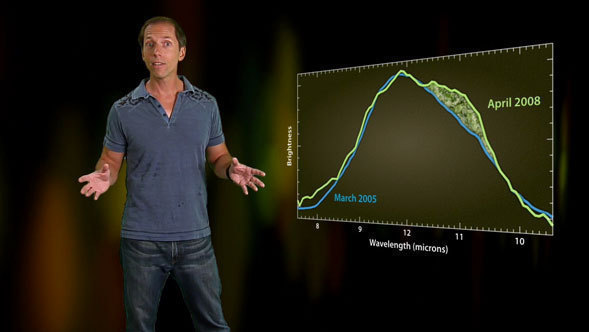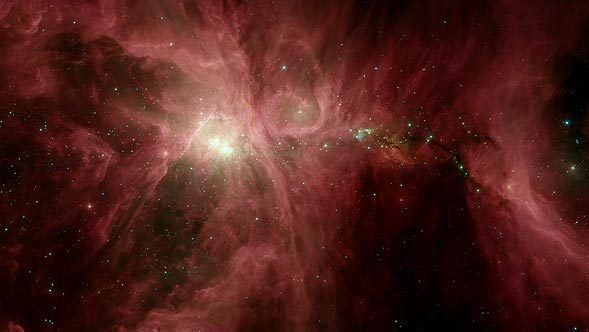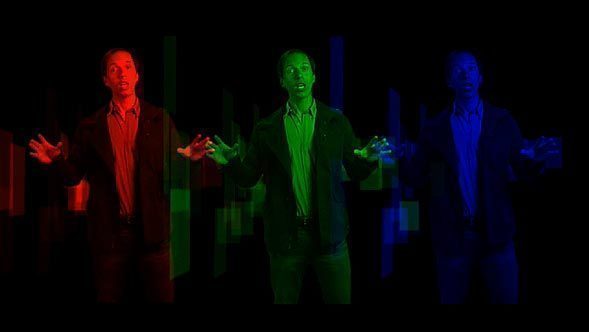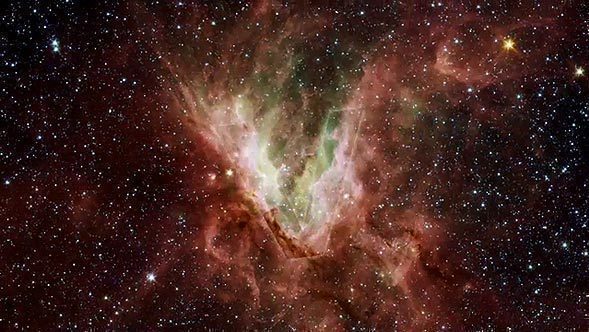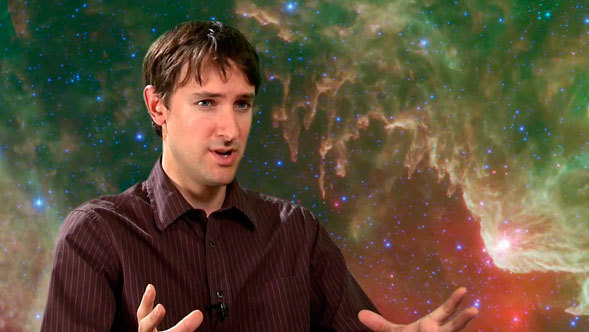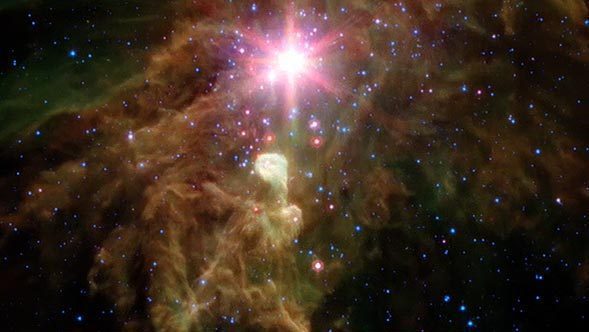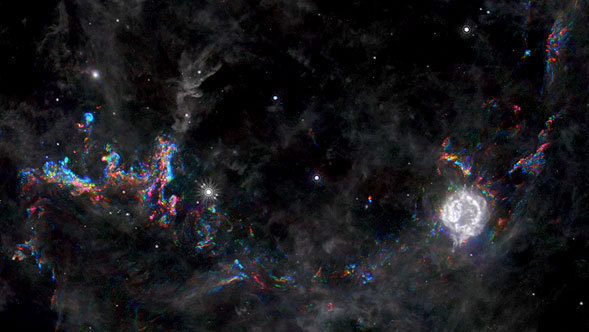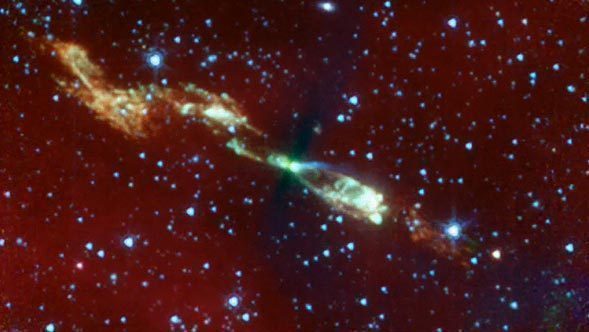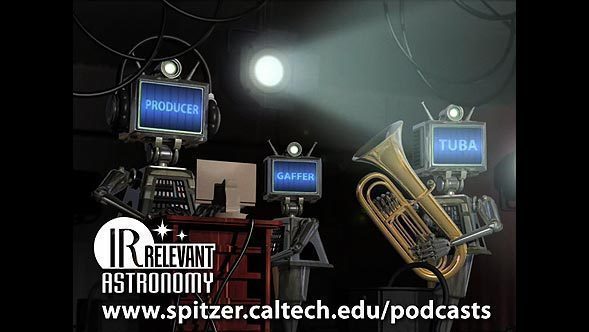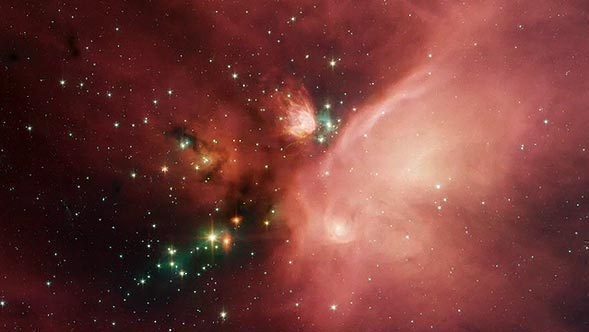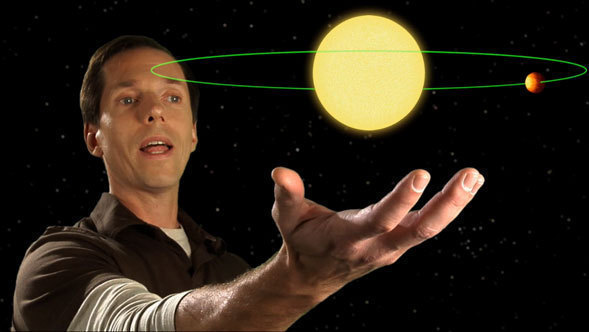One year ago, astronomers announced the discovery that seven roughly Earth-sized worlds orbited around the nearby star TRAPPIST-1. Now a year later, additional data have refined our understanding of these planets.We now know more about the TRAPPIST-1 system than any other solar system other than our own.
This artist's concept animation shows a brown dwarf with bands of clouds, thought to resemble those seen on Neptune and the other outer planets in the solar system.
May 3rd, 2017 marks the 5,000th day of NASA's Spitzer Space Telescope mission. This video gives us a detailed look at six of these days, showing how an automated observatory like Spitzer, which is effectively an astronomy robot, spends its time. It’s overall mission design allows for an unprecedented degree of efficiency, allowing it to study the full range of astronomical phenomena including nearby objects in the solar system, stars in our galaxy, and galaxies out to the edge of the observable universe.
NASA's Spitzer Space Telescope, which launched Aug. 25, 2003, will begin an extended mission—the “Beyond” phase—on Oct. 1, 2016.
The exoplanet HD80606 b spends most of its time far from its star, but every 111 days it swings in feverishly close. NASA's Spitzer Space Telescope measured the planet's extreme temperature swings using infrared light. This allowed astronomers to simulate its atmosphere.
Welcome home! This is our Milky Way galaxy as you’ve never seen it before. Ten years in the making, this is the clearest infrared panorama of our galactic home ever made, courtesy of NASA's Spitzer Space Telescope.
On August 25, 2003, NASA launched the Spitzer Space Telescope to reveal secrets of the infrared universe.
Astronomers using NASA's Spitzer Space Telescope have detected what they believe is an alien world just two-thirds the size of Earth - one of the smallest on record!
Over the last half century this Cygnus X has been yielding its secrets to the scrutiny of infrared observations. NASA’s Spitzer Space Telescope has now provided the best view yet of what we now know is one of the largest single areas of star formation in our Milky Way galaxy.
Hiding behind the constellations Sagittarius and Scorpius is the center of our own Milky Way galaxy, over 25,000 light years away. This patch of sky is mostly dark in visible light, shrouded by dust clouds that lie between us and the Galactic center. But the infrared vision of NASA’s Spitzer Space Telescope sees through the dust showing us this strange and tumultuous region.
Seen here in visible light, the North America Nebula strangely resembles its namesake continent. Expanding our view to include infrared light, the dark dust lanes and concealed stars glow in red colors while the continental gas clouds shift to an ocean-‐like blue. Pushing entirely into the infrared spectrum, we see even more detail in the convoluted dust clouds.
While astronomers have identified over 500 planets around other stars, they’re all too small and distant to fill even a single pixel in our most powerful telescopes. That’s why science must rely on art to help us imagine these strange new worlds.
Today's telescopes study the sky across the electromagnetic spectrum. Each part of the spectrum tells us different things about the Universe, giving us more pieces of the cosmic jigsaw puzzle. The most powerful telescopes on the ground and in space have joined forces over the last decade in a unique observing campaign, known as the Great Observatories Origins Deep Survey, or GOODS, which reaches across the spectrum and deep back into cosmic time.
Hidden behind a dark veil of dust in the constellation Sagittarius, a lurking dragon has been revealed by the infrared eye of NASA’s Spitzer Space Telescope. It gives us a glimpse into how spiral arms affect the formation of stars.
When worlds collide, the result is spectacular, and astronomers think they’ve detected the aftermath of such an event around another star.
In December of 2009, NASA launched its latest infrared telescope, the Wide-field Infrared Survey Explorer. This satellite, also known as WISE, is on a mission to map the entire sky in infrared light.
In May of 2009, the European Space Agency successfully launched the Herschel Space Observatory, a new eye for the infrared universe. Its 3.5 meter mirror lets us see into the far infrared spectrum with unprecedented clarity.
Astronomers have found One Ring to rule them all, not in the land of Mordor, but around Saturn, the Lord of the Rings of the solar system.
The fading light of a flaring young star has shed light on a puzzle involving crystals and comets.
Explore the dusty secrets of the Orion Nebula through Spitzer's infrared vision.
To commemorate this International Year of Astronomy, three of NASA's flagship observatories have put a new spin on how we see the Pinwheel Galaxy!
The Omega Nebula, or M17, is a star-forming region in the constellation of Sagittarius and is about 6,000 light years away.
It's a chaotic region, sculpted by the glare of one generation of massive stars that's giving rise to the next.
Two and a half billion infrared pixels are exposing our own Galaxy in this new image from NASA's Spitzer Space Telescope!
A group of baby stars form a "stellar snowflake" in Spitzer's observations of a dusty region near the Cone Nebula.
A supernova flash echoing through surrounding dust clouds has given astronomers a virtual time machine for studying the light from the explosion that nobody saw.
Giant jets from baby stars blow colorful bubbles in interstellar space. Spitzer's infrared view reveals these structures in colorful ways never seen before.
IRrelevant Astronomy takes a lighthearted, comedic look at the infrared Universe. Enjoy this peek at the Spitzer Space Telescope's newest video podcast series.
One of the most striking nearby star-forming regions is the Rho Ophiuchi Cloud. New images from Spitzer reveal its infrared wonders.
These two extreme planets have set the records for the hottest and windiest known worlds anywhere.
